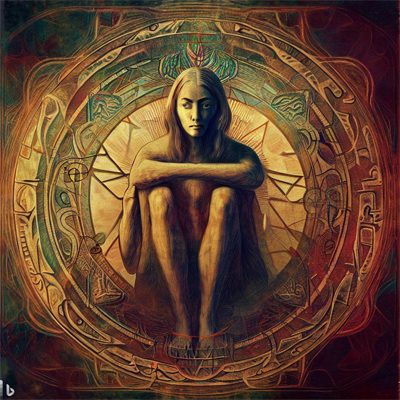Introduction:
In the realm of psychology, the works of Carl Jung have revolutionized our understanding of the human psyche. Jung’s exploration of archetypes has shed light on the profound influence of these universal patterns on our thoughts, behaviors, and relationships. Among the archetypes, the animus archetype holds significant importance. This article delves into Carl Jung’s animus archetype, its relevance in psychoanalysis, and how it is utilized to unravel the complexities of masculine energy and personal growth.
Understanding the Animus Archetype:
In Jungian psychology, the animus archetype represents the unconscious masculine energy within the female psyche. It embodies the essence of masculinity, encompassing qualities such as assertiveness, rationality, courage, and purpose. The animus archetype acts as a bridge between the conscious and unconscious realms, shaping a woman’s perceptions, relationships, and psychological well-being.
The Importance of Animus Integration:
Jung emphasized the significance of integrating the animus archetype as part of an individual’s journey towards wholeness. Integration involves recognizing, understanding, and integrating the unconscious aspects of masculinity into conscious awareness. By acknowledging and embracing the animus, women can develop a more balanced and harmonious relationship with their inner masculine energy, leading to increased assertiveness, autonomy, and self-empowerment.
The Manifestation of the Animus:
The animus archetype manifests itself in various ways, including dreams, fantasies, projections onto others, and interpersonal dynamics. It often appears as an inner image of a man, symbolizing the unconscious masculine qualities that need to be integrated. The animus can take on different forms, representing different aspects of masculinity, ranging from protective and wise to aggressive and domineering. The integration of the animus involves engaging with these images and understanding their symbolic significance.
Animus and Relationships:
The animus archetype plays a crucial role in shaping a woman’s relationships, both with others and with herself. Unintegrated animus projections can lead to idealization or rejection of masculine figures, creating imbalanced dynamics and hindering authentic connections. By recognizing and integrating the animus, women can develop more authentic, balanced, and fulfilling relationships based on mutual respect, understanding, and appreciation of masculine qualities.
Animus Development and Psychological Growth:
Psychoanalysis offers a fertile ground for exploring and integrating the animus archetype. Through therapeutic techniques such as dream analysis, active imagination, and dialogue, individuals can unearth the unconscious elements of the animus and gain insight into their influence on personal experiences and relationships. By engaging in this process, individuals can navigate inner conflicts, heal wounds, and foster personal growth.
Transference and Countertransference:
The exploration of the animus archetype in psychoanalysis often triggers transference and countertransference dynamics. Transference occurs when individuals project their unconscious animus images onto the therapist or significant others, evoking intense emotions and patterns reminiscent of past relationships. Countertransference, on the other hand, reflects the therapist’s emotional responses and projections onto the client. These dynamics offer opportunities for deeper understanding and integration of the animus archetype within the therapeutic relationship.
Personal Growth and Self-Actualization:
Integrating the animus archetype is a transformative process that leads to personal growth and self-actualization. By embracing and understanding the masculine aspects of the psyche, women expand their capacity for assertiveness, rationality, and independence. Integrating the animus enables women to develop a stronger sense of self, allowing them to express their unique strengths and pursue their goals with confidence and purpose. It fosters a more authentic and empowered existence.
Conclusion:
Carl Jung’s animus archetype serves as a powerful tool in psychoanalysis, illuminating the depths of masculine energy within the female psyche. By exploring and integrating the animus archetype, individuals embark on a transformative journey towards self-discovery, empowerment, and personal growth. Psychoanalysis provides a rich framework for delving into the complexities of the animus, offering therapeutic techniques and insights that facilitate the exploration and integration of masculine energy.
By embracing the animus archetype, women can develop a more balanced and authentic expression of their true selves, fostering assertiveness, autonomy, and self-empowerment. Ultimately, the integration of the animus archetype leads to a harmonious integration of feminine and masculine energies, promoting personal growth, wholeness, and a profound sense of connection with oneself and the world.
Hits: 16

